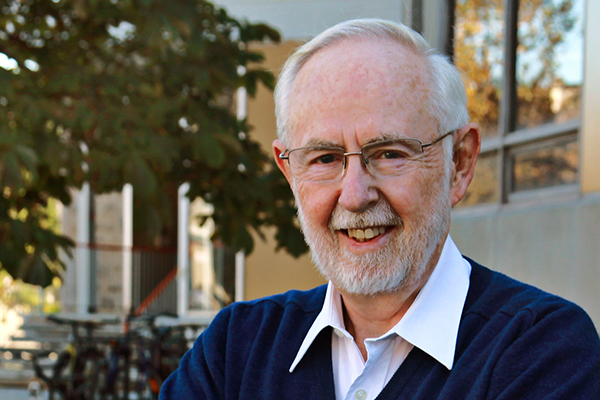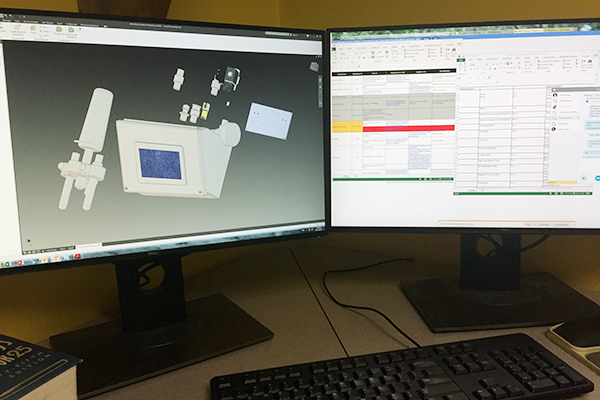Easy-to-build ventilators
April 7, 2020
Share

A team of Canadian physicists, including Nobel Laureate Art McDonald and other Queen’s physics researchers, are part of an international team working to develop a robust, easy-to-manufacture ventilator that can be certified and manufactured with off-the-shelf parts from established supply chains.
Queen’s Professor Emeritus, Dr. Art McDonald was co-recipient of the 2015 Nobel Prize in Physics for his discovery that neutrinos, essential building blocks of the Universe, have mass. He is partnering with the nation’s leading particle and nuclear physics laboratories, SNOLAB, TRIUMF and Canadian National Laboratories, to lead the Canadian arm of the Mechanical Ventilator Milano project.
The ventilator design leverages the collaborators’ collective expertise in the design of gas-handling and electronic control systems used in the search for dark matter, the mysterious substance which makes up more than 80 per cent of the universe. The original design and prototypes were led by Dr. Cristiano Galbiati, a Princeton professor and collaborator on Italy’s DarkSide (Global Argon Dark Matter Collaboration) experiment in response to that country’s desperate need for ventilators.
Now a multi-national project, the Mechanical Ventilator Milano collaboration aims to design, develop, build and certify a simple mechanical ventilator system that provides a controlled supply of oxygen and air to COVID-19-stricken patients. Importantly, the mechanical, control, and display systems are constructed from readily available parts, aiding rapid manufacture that can be adopted in different countries.
“The goal is to develop a ventilator model to meet current needs that can be constructed quickly and reliably in Canada and in other countries,” says Dr. Art McDonald, Professor Emeritus (Physics, Engineering Physics, and Astronomy) at Queen’s University and 2015 Nobel Laureate. “This project is an example of how we can harness the capacity and talent of the Canadian nuclear and particle physics community at SNOLAB, TRIUMF, and the Canadian Nuclear Laboratories to help combat COVID-19 with our international partners.”
With Dr. McDonald, the Canadian partners, Canadian Nuclear Laboratories, SNOLAB and TRIUMF, have joined an international group of researchers from Italy, the EU and US, working: to develop a common international standard for the machine, modify the design in collaboration with medical clinicians, test the viability of the device in medical environments, secure certifications through national health agencies, and partner with governments and manufacturers to support mass production.
Today, in his daily media briefing, the Prime Minister of Canada, Justin Trudeau, highlighted the project as one of the key examples of how Canadian researchers are working together to provide effective and creative solutions to supply shortages in the COVID-19 pandemic. The project was also recently highlighted in a Globe and Mail article, Nobel Laureate leads push for simple made-in-Canada ventilator.
The project continues to evolve. The Gazette will continue to follow this project and keep the Queen’s community updated on progress and further developments. Please visit the Mechanical Ventilator Milano website for more information.
